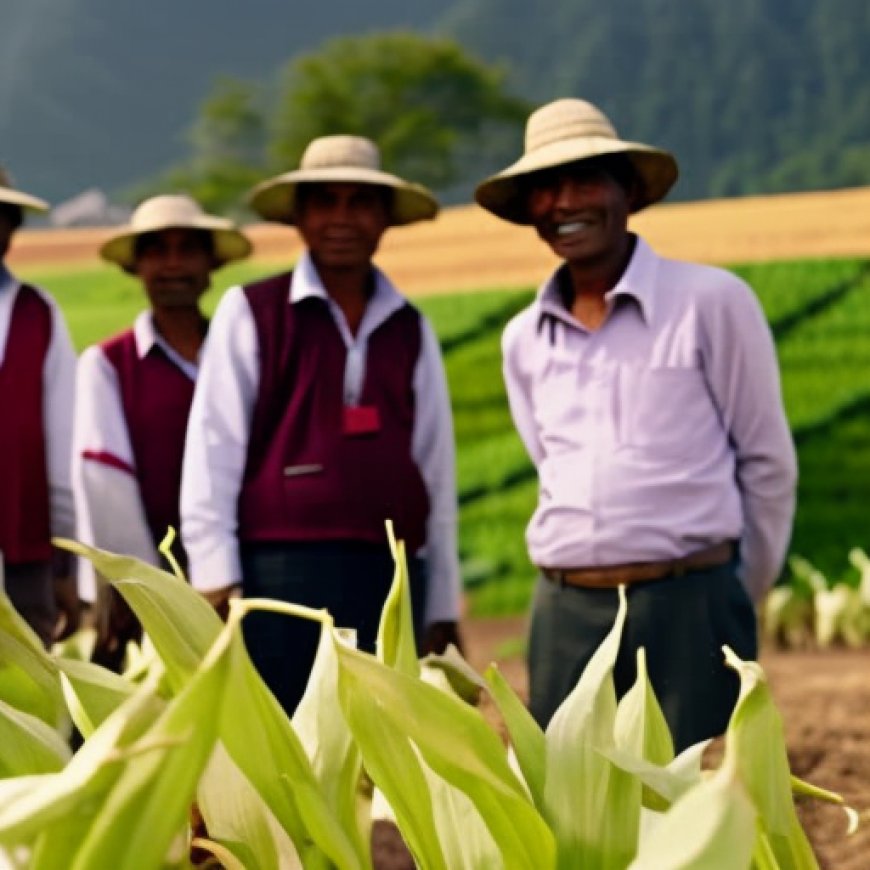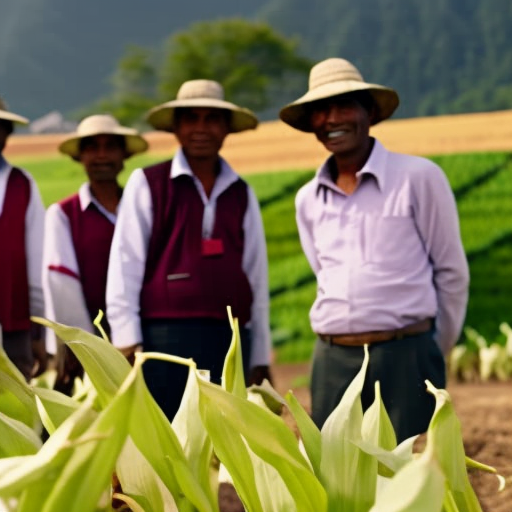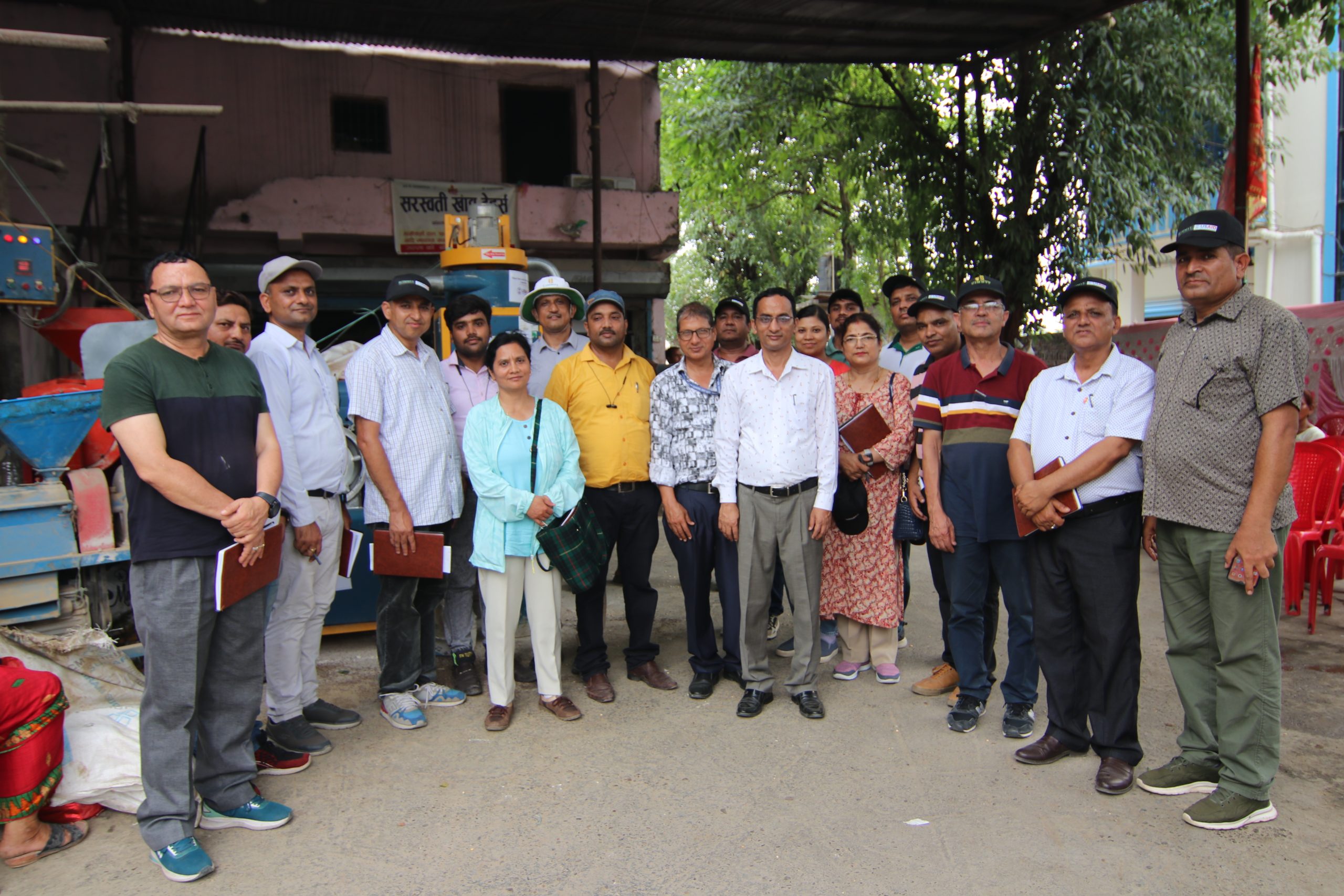Nepal maize farmers share vision of a more profitable future with visiting agriculture officials
Nepal maize farmers share vision of a more profitable future with ... CIMMYT


Report: Model Sites for Maize Marketing in Nepal
In a recent visit to 5 model sites for maize marketing in midwestern Nepal, 30 federal, provincial, and local agricultural authorities were impressed with the coordination and capacity development among market actors, improved supply chain management, and leveraging of government support. These efforts are benefiting farmers and grain buyers, aligning with the Sustainable Development Goals (SDGs).
Background
The model sites were established as part of the Nepal Seed and Fertilizer (NSAF) project, led by CIMMYT with funding from the United States Agency for International Development (USAID). The project aims to raise crop productivity, incomes, and household food and nutrition security across 20 districts of Nepal, including 5 that were severely affected by the catastrophic 2015 earthquake and aftershocks.
Key Findings
During the visit, the authorities observed commercial maize fields and heard stakeholders’ perceptions of progress and key lessons. As a result, they proposed additional funding for irrigation, machinery, grain grading, and crop insurance, among other support measures. They also promised to help expand activities of the model sites.
The participants included officials and experts from various government departments and organizations, such as the Ministry of Agriculture and Livestock Development (MoALD), the Department of Agriculture (DoA), and the Ministry of Land Management, Agriculture and Cooperatives (MoLMAC). They also interacted with farmers, cooperative leaders, traders, rural municipality officials, elected representatives, and feed mill representatives.
Impacts and Recommendations
Farmers shared their experiences of behavioral change in maize production and emphasized the benefits of their strengthened relationships with grain buyers. They expressed their dreams to expand spring maize cultivation, which aligns with SDG 2: Zero Hunger.
Shanta Karki, deputy director of the General Department of the DoA, lauded CIMMYT’s efforts for agriculture growth, improved soil fertility, and sustainable agriculture development through NSAF. This aligns with SDG 12: Responsible Consumption and Production.
Madan Singh Dhami, secretary of MoLMAC in Sudurpaschim Province, emphasized the importance of irrigation, building farmers’ capacities, interactions with buyers, and applying digital innovations to catalyze extension. This aligns with SDG 6: Clean Water and Sanitation and SDG 9: Industry, Innovation, and Infrastructure.
CIMMYT’s Contribution
CIMMYT scientists have been working in Nepal for over three decades to boost the productivity, profitability, and ecological efficiency of maize- and wheat-based cropping systems. Their efforts aim to improve rural communities’ food security and livelihoods, aligning with multiple SDGs including SDG 1: No Poverty and SDG 8: Decent Work and Economic Growth.

SDGs, Targets, and Indicators
-
SDG 2: Zero Hunger
- Target 2.3: By 2030, double the agricultural productivity and incomes of small-scale food producers, in particular women, indigenous peoples, family farmers, pastoralists and fishers, including through secure and equal access to land, other productive resources and inputs, knowledge, financial services, markets and opportunities for value addition and non-farm employment.
- Indicator 2.3.1: Volume of production per labor unit by classes of farming/pastoral/forestry enterprise size.
-
SDG 8: Decent Work and Economic Growth
- Target 8.3: Promote development-oriented policies that support productive activities, decent job creation, entrepreneurship, creativity and innovation, and encourage the formalization and growth of micro-, small- and medium-sized enterprises, including through access to financial services.
- Indicator 8.3.1: Proportion of informal employment in non-agriculture employment, by sex.
-
SDG 12: Responsible Consumption and Production
- Target 12.3: By 2030, halve per capita global food waste at the retail and consumer levels and reduce food losses along production and supply chains, including post-harvest losses.
- Indicator 12.3.1: Food loss index.
Table: SDGs, Targets, and Indicators
| SDGs | Targets | Indicators |
|---|---|---|
| SDG 2: Zero Hunger | Target 2.3: By 2030, double the agricultural productivity and incomes of small-scale food producers, in particular women, indigenous peoples, family farmers, pastoralists and fishers, including through secure and equal access to land, other productive resources and inputs, knowledge, financial services, markets and opportunities for value addition and non-farm employment. | Indicator 2.3.1: Volume of production per labor unit by classes of farming/pastoral/forestry enterprise size. |
| SDG 8: Decent Work and Economic Growth | Target 8.3: Promote development-oriented policies that support productive activities, decent job creation, entrepreneurship, creativity and innovation, and encourage the formalization and growth of micro-, small- and medium-sized enterprises, including through access to financial services. | Indicator 8.3.1: Proportion of informal employment in non-agriculture employment, by sex. |
| SDG 12: Responsible Consumption and Production | Target 12.3: By 2030, halve per capita global food waste at the retail and consumer levels and reduce food losses along production and supply chains, including post-harvest losses. | Indicator 12.3.1: Food loss index. |
Analysis
1. Which SDGs are addressed or connected to the issues highlighted in the article?
The SDGs addressed or connected to the issues highlighted in the article are SDG 2: Zero Hunger, SDG 8: Decent Work and Economic Growth, and SDG 12: Responsible Consumption and Production.
2. What specific targets under those SDGs can be identified based on the article’s content?
Based on the article’s content, the specific targets under the identified SDGs are:
– Target 2.3: By 2030, double the agricultural productivity and incomes of small-scale food producers.
– Target 8.3: Promote development-oriented policies that support decent job creation and entrepreneurship.
– Target 12.3: By 2030, halve per capita global food waste and reduce food losses along production and supply chains.
3. Are there any indicators mentioned or implied in the article that can be used to measure progress towards the identified targets?
Yes, there are indicators mentioned or implied in the article that can be used to measure progress towards the identified targets:
– Indicator 2.3.1: Volume of production per labor unit by classes of farming/pastoral/forestry enterprise size.
– Indicator 8.3.1: Proportion of informal employment in non-agriculture employment, by sex.
– Indicator 12.3.1: Food loss index.
These indicators can be used to measure the progress towards doubling agricultural productivity and incomes, promoting decent job creation and entrepreneurship, and reducing food waste and losses.
By analyzing the article, we can identify the relevant Sustainable Development Goals (SDGs), targets, and indicators as follows:
| SDGs | Targets | Indicators |
|---|---|---|
| SDG 2: Zero Hunger | Target 2.3: By 2030, double the agricultural productivity and incomes of small-scale food producers, in particular women, indigenous peoples, family farmers, pastoralists and fishers, including through secure and equal access to land, other productive resources and inputs, knowledge, financial services, markets and opportunities for value addition and non-farm employment. | Indicator 2.3.1: Volume of production per labor unit by classes of farming/pastoral/forestry enterprise size. |
| SDG 8: Decent Work and Economic Growth | Target 8.3: Promote development-oriented policies that support productive activities, decent job creation, entrepreneurship, creativity and innovation, and encourage the formalization and growth of micro-, small- and medium-sized enterprises, including through access to financial services. | Indicator 8.3.1: Proportion of informal employment in non-agriculture employment, by sex. |
| SDG 12: Responsible Consumption and Production | Target 12.3: By 2030, halve per capita global food waste at the retail and consumer levels and reduce food losses along production and supply chains, including
Behold! This splendid article springs forth from the wellspring of knowledge, shaped by a wondrous proprietary AI technology that delved into a vast ocean of data, illuminating the path towards the Sustainable Development Goals. Remember that all rights are reserved by SDG Investors LLC, empowering us to champion progress together. Source: cimmyt.org
Join us, as fellow seekers of change, on a transformative journey at https://sdgtalks.ai/welcome, where you can become a member and actively contribute to shaping a brighter future.
|








